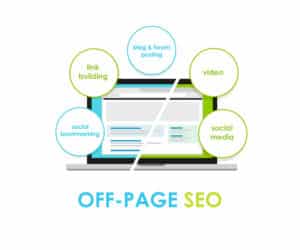Search Engine Optimization (SEO) is no longer a marketing afterthought—it’s a core component of sustainable business growth. As digital competition increases and customer acquisition costs rise, SEO remains one of the most cost-effective ways to drive qualified traffic, increase visibility, and grow revenue.
However, SEO must be approached strategically to achieve meaningful results—not as a technical checklist but as a scalable asset aligned with your business goals. This guide is built to help CEOs and Marketing Directors cut through the complexity and gain clarity on how SEO contributes to growth, what strategies to prioritize, and which pitfalls to avoid.
Why SEO Should Be a C-Suite Priority

- High ROI: Unlike paid ads, SEO compounds over time—reducing acquisition costs and increasing efficiency.
- Own Your Market: Ranking on the first page for high-intent search terms positions your brand as a category leader.
- Control Brand Narrative: SEO helps you shape how your brand appears when customers research online.
- Supports All Channels: Strong SEO improves the performance of PPC, social media, and email through better content and traffic.
The Basics of SEO
SEO is the process of optimizing a website to rank higher in search engine results pages (SERPs). This involves making a site more attractive to search engines by improving various factors such as keywords, content quality, website structure, and user experience. There are three main components of SEO:
- On-Page SEO – Optimizing the content and structure of each page to increase search visibility and user relevance.
- Use strategic keywords aligned with buyer intent
- Optimize meta titles, descriptions, and header tags
- Improve readability and engagement with visuals and clear structure
- Off-Page SEO – Building your website’s authority through external validation and trust signals.
- Technical SEO – Deals with website structure, speed, mobile-friendliness, and other technical aspects that affect search engine crawling and indexing.
Understanding Keywords and Search Intent
Keywords are the foundation of SEO. They are the words and phrases that users type into search engines to find information. Businesses should conduct thorough keyword research to identify terms relevant to their industry and audience.
Types of Keywords
- Short-Tail Keywords: General terms with high search volume and competition (e.g., “digital marketing”).
- Long-Tail Keywords: More specific phrases with lower competition but higher conversion potential (e.g., “best digital marketing strategies for small businesses”).
- Local Keywords: Geo-targeted terms for businesses operating in specific locations (e.g., “SEO services in New York”).
Understanding search intent is crucial. Users may have different intentions behind their searches, including:
- Informational Intent: Looking for answers or guides (e.g., “how to optimize a website for SEO”).
- Navigational Intent: Searching for a specific brand or website (e.g., “Moz SEO tools”).
- Transactional Intent: Ready to make a purchase (e.g., “buy SEO software online”).
The Importance of High-Quality Content
Content is king in the world of SEO. High-quality, engaging, and informative content attracts visitors and keeps them on a site longer, signaling to search engines that the site is valuable.
Best Practices for Content Optimization
- Use Keywords Naturally: Avoid keyword stuffing and focus on user-friendly writing.
- Create Valuable Content: Answer user questions, provide insights, and solve problems.
- Optimize for Readability: Use short paragraphs, bullet points, and clear headings.
- Include Visuals: Images, infographics, and videos enhance user engagement.
- Update Content Regularly: Keep information fresh and relevant to maintain rankings.
On-Page SEO Strategies
Title Tags and Meta Descriptions
These elements provide a brief summary of a page’s content and influence click-through rates (CTR). Ensure they are:
- Concise yet descriptive
- Contain target keywords
- Enticing to users
URL Structure
SEO-friendly URLs improve user experience and search rankings. Best practices include:
- Keeping URLs short and descriptive
- Using hyphens instead of underscores
- Avoiding unnecessary parameters
Internal Linking
Internal links help distribute page authority and guide users through a website. Benefits include:
- Improved navigation
- Increased time spent on site
- Enhanced indexing by search engines
Off-Page SEO Strategies

Backlinks and Their Importance
Backlinks (inbound links from other websites) signal credibility and authority to search engines. High-quality backlinks improve rankings.
How to Build Backlinks
- Guest Blogging: Write articles for reputable websites in your industry.
- Content Marketing: Create shareable, link-worthy content.
- Influencer Outreach: Collaborate with industry experts for mentions.
- Local Listings and Directories: Submit business details to Google My Business and Yelp.
Social Signals
Although not a direct ranking factor, social media engagement can drive traffic and brand awareness. Businesses should:
- Share blog posts and website updates on social platforms.
- Encourage social sharing through compelling content.
- Engage with followers to build a loyal audience.
Technical SEO: Ensuring a Search-Friendly Website
Technical SEO improves a website’s infrastructure to enhance crawling, indexing, and user experience.
Website Speed Optimization
Page speed is a ranking factor. Improve loading times by:
- Compressing images
- Using a content delivery network (CDN)
- Minimizing JavaScript and CSS files
Mobile-Friendliness
With Google’s mobile-first indexing, websites must be optimized for mobile users. Best practices include:
- Using responsive design
- Ensuring touch-friendly buttons and navigation
- Avoiding intrusive pop-ups
Secure Website (HTTPS)
Google prioritizes secure websites. Businesses should implement SSL certificates to encrypt user data and improve trust.
Local SEO for Brick-and-Mortar Businesses
Local SEO helps businesses attract customers in their geographical area. Key strategies include:
- Optimizing Google My Business (GMB): Complete your profile, add images, and encourage reviews.
- Using Local Keywords: Incorporate city and neighborhood names in content.
- Encouraging Customer Reviews: Positive reviews boost credibility and rankings.
- Building Local Citations: List your business on local directories.
Measuring SEO Success
Tracking and analyzing SEO performance is crucial for refining strategies. Key metrics include:
- Organic Traffic: The number of visitors from search engines.
- Keyword Rankings: Positions of target keywords in SERPs.
- Bounce Rate: Percentage of users who leave without interacting.
- Click-Through Rate (CTR): Percentage of users clicking on search results.
- Conversion Rate: Percentage of visitors taking desired actions.
Businesses can use tools like Google Analytics, Google Search Console, and third-party platforms (Ahrefs, SEMrush) to monitor SEO progress.
Common SEO Mistakes to Avoid

- Ignoring Mobile Optimization: Neglecting mobile users can harm rankings.
- Overlooking Technical SEO: Slow, unoptimized sites perform poorly.
- Keyword Stuffing: Unnatural overuse of keywords leads to penalties.
- Neglecting Content Updates: Outdated content loses relevance.
- Buying Low-Quality Backlinks: Can result in search engine penalties.
The Future of SEO
SEO is ever-evolving. Emerging trends businesses should watch for include:
- AI and Machine Learning: Google’s AI algorithms like RankBrain impact rankings.
- Voice Search Optimization: More users are searching via voice assistants.
- E-A-T (Expertise, Authoritativeness, Trustworthiness): High-quality, credible content ranks better.
- Video SEO: Optimizing video content for YouTube and Google search.
- User Experience (UX): A positive UX improves SEO performance.
SEO is a powerful tool for businesses looking to enhance their online presence and attract more customers. By implementing on-page, off-page, and technical SEO strategies, companies can improve search visibility, increase website traffic, and boost conversions. Staying updated with SEO trends and best practices will ensure long-term success in the digital landscape. Businesses should invest in SEO consistently and adapt to algorithm changes to maintain a competitive edge. For expert help, call Go Media at (919) 443-5405 today!
